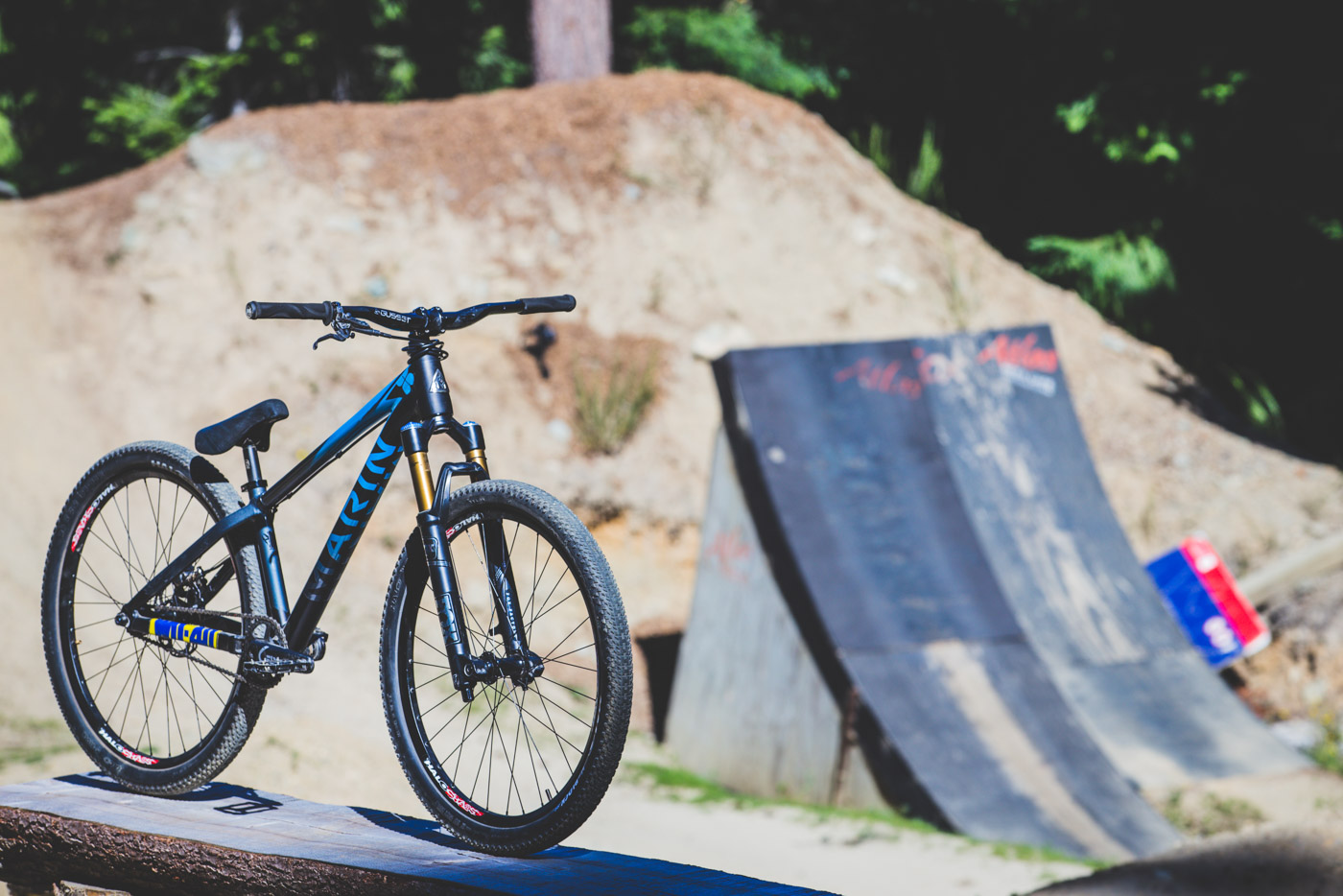With Matt Jones joining forces with Marin for 2017 it was only a matter of time before a new bike appeared.
And here it is … the Marin Alcatraz, designed in collab with Matt.
Pete grabbed Matt for a chat during his time in New Zealand. Matt was in the country with the prototype getting ready for Crankworx, Rotorua.
Photos by Scott Pattenden / interview by Pete Scullion

Pete: Let’s start at the start. How did designing your own frame come about?
Matt Jones: I begun speaking with Marin back at Eurobike last year in Germany, where it was obvious that the brand was working to push their new bikes and build on the household name that they have. Essentially I wanted to be a part of that but as a Slopestyle rider.
The main issue was that Marin don’t currently have a production dirt jump frame, so an opportunity arose for us work together on that, which is the best opportunity I’ve ever had with a bike sponsor.
Have you ever had a product you’ve been this heavily involved with before?
I worked with Saracen bikes on their dirt jump frame a few years ago giving feedback to improve the frame, but I was limited by the frames previous design. I’ve also had input unto Gusset Components with the new S2 line that’s coming soon.

Did you have any parameters to work to before you started?
The beauty of this partnership is that there were no guidelines to work to other than creating the ultimate dirt jump frame for myself to perform on, that’s what makes the Marin Alcatraz so special to me.
Did you go with something totally new or did you adapt an existing design?
I’ve ridden lots of dirt jump bikes over the past decade, and have tried to understand their geometry and its correspondence to the feel of the bike. So there are factors such as chainstay length and head angle which are evidently crucial when it comes to doing tricks on the bike and progression.

What was the catalyst for you designing your own frame?
The catalyst for me was the drive to progress further with tricks and be comfortable on big slopestyle features, and a lot of this surely can be helped by feeling 100% confident in your bike?
So how do you even start a project like the Alcatraz?
I am lucky that Marin have a top industry engineer called Matt Cipes – or ‘Cippy’. He used to work at Specialized and has been responsible for the design of the new, updated Marin bikes like the Nail Trail or the new Attack Trails.
Cippy has been amazing at understanding my wants and needs and turning them into a prototype frame, which we then tested, tweaked and from the process has come production frame that’s BOSS.

Can we talk about the overall design of the frame?
The first attribute is stiffness which is instantly noticeable on pump tracks, tight berms and steep trails, she’s a speed machine. The frame is also short, which lends itself hugely to spinning fast off off lips, the flip side to this would typically be a loss of stability but due to the refined geometries, this frame is incredibly stable at high speed and on big jumps. I just got home from Crankworx in Rotorua where I was astounded at how the bike rode through such a big course.
Did you know which frame material you wanted before you started?
Aluminium was the only option in my eyes, due to the need for stiffness and a light weight frame.
How do you pin that down and say “yep, people will like this”?
This is the tricky part. There’s been a limited number of people involved in the process, as Cippy the engineer is so competent at what he does and I am the only dirt jump rider working with Marin.
However, there’s not been any rushing with the design and each stage was discussed and reflected on before moving forward. So I’m adamant that we’ve created the perfect dirt jump frame for me, and subsequently for countless riders out there, because I’m lucky that I’m a pretty average build and height.

So how does the process go once you’ve got a design nailed?
This is the exciting part because we get to work on the colour-way. Which is rad, it’s matte black combined with a gloss blue fade. Everyone likes matte black, everyone also likes blue sky, and the word fade sounds quite rad too..
How did you guys test out your design and your ideas?
I tested the first prototype at all the locations where consumers might ride the frame, and this was the foundation to the testing process and relevant feedback. This consisted of skate park riding, pump tracks, flowy trails and dirt jumps as well as my compound for bigger jumps and tricks.

At what point did you know it was ready to go and get into production? What happened at that point?
I rode the first prototype of the Marin Alcatraz for 10 weeks before working with Cippy on the right changes. The main benefit to testing was we weren’t watching the clock so there was plenty of time to get it right. After we’d tweaked the design and I’d ridden the second version, it was clear that we had it nailed so it’s time now to head towards production with the rad colour-way too.
Did you nail it first time or is there anything you’d like to have done?
The frame is definitely spot on!
And what’s next?
I’m looking to have a long partnership with Marin and continued input into their bikes and new designs, so be sure to see new models from a legendary brand in the not-too-distant future!
You can follow Matt on Instagram here.
Or visit Marin Bikes here.





